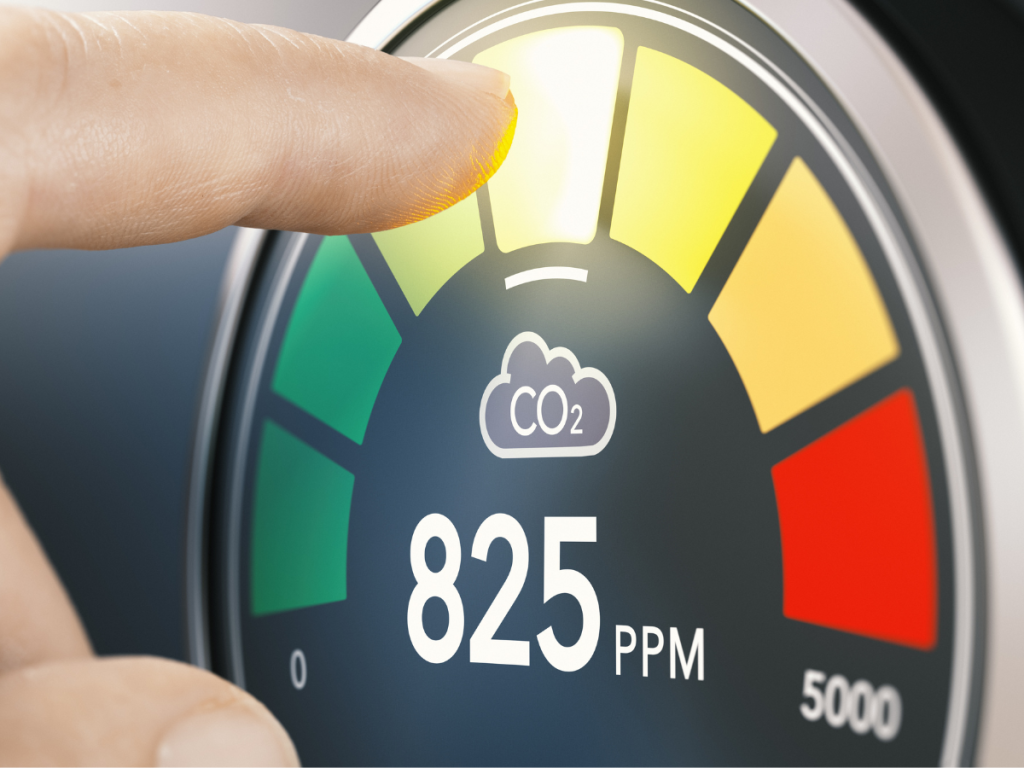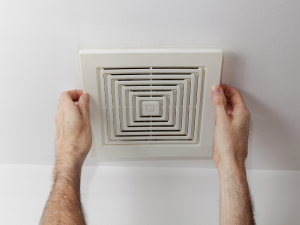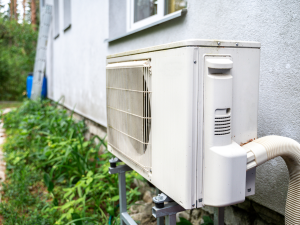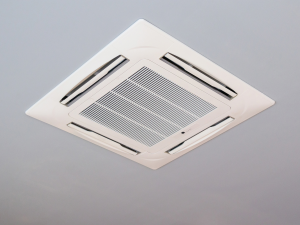Feeling a little out of breath? No, we’re not talking about the feeling of chasing your kiddos up a set of stairs. We mean your indoor air quality!
Even if you live alone, your home might be more crowded than you think, filled with an invisible guest named carbon dioxide. Don’t worry; we’re not here to give you a chemistry lecture, but we’d like to tell you about some effective ways to reduce carbon dioxide (CO2) levels in your home.
So gather ‘round homemakers and eco-warriors alike, and let’s dive into how to keep your home’s air quality breathable and safe.
Causes and symptoms of high CO2 levels in your home
Increased levels of carbon dioxide can come from numerous sources, such as fuel-burning appliances, poor ventilation or smoking indoors. Below are some of the symptoms of high CO2 levels and what might be causing it in your home.
What causes increased carbon dioxide levels?
Carbon dioxide levels in your indoor environment may quickly increase for various reasons, often due to poor ventilation.
Here’s a quick throwback to science class! When we breathe, we emit carbon dioxide, so the more people you have in your home, the more carbon dioxide is produced. If you’re worried about these CO2 emissions, don’t be. This process is natural and produces significantly lower amounts of CO2 than other sources.
But what causes high CO2 levels in a room? One of the top reasons is the burning of fossil fuels for home appliances. For example, furnaces, boilers, stoves, fireplaces etc, can all release CO2 into your indoor environment.
Poor ventilation can become a big issue, as inadequate ventilation won’t circulate air and remove excess CO2. Furthermore, habits like indoor smoking can increase indoor carbon dioxide concentrations. Some common household items like cleaning supplies release pollutants that lower air quality overall and contribute to higher CO2 concentrations.
Signs and symptoms of elevated carbon dioxide levels:
Although carbon dioxide itself isn’t considered a toxic gas, it can still have negative health effects in large doses. Here are some symptoms associated with an extended exposure to high carbon dioxide levels:
- Shortness of breath
- Dizziness
- Headaches
- Nausea
- Exhaustion (mild to severe)
If you notice any of the above, open a window immediately or go outside for some fresh air. Also, be sure to contact an HVAC or air care professional promptly so they can assess your system and run tests to check the air quality in your home.
How to reduce CO2 in your home: 7 Ways
Here are a few strategies to avoid carbon dioxide levels from rising to unsafe levels in your home:
1. Maintain your HVAC system well
To effectively regulate CO2 levels in your home, it’s crucial to properly maintain your heating, ventilation and air conditioning system. Check and replace filters on a regular basis. Clogged filters can hinder airflow and decrease your system’s efficiency.
Just like how water isn’t clean when it flows from a dirty pipe, dirty ductwork will affect your indoor air quality. An energy-efficient HVAC system can decrease your home’s overall energy consumption. Additionally, a well-maintained heating system will quickly heat or cool your home faster and simultaneously reduce greenhouse gas emissions.
To ensure your systems are operating at maximum efficiency, schedule regular maintenance visits with a professional technician and conduct periodic checks yourself.
By repairing or replacing older models, you can also avoid incomplete combustion (when fuels don’t burn properly) and reduce the risk of not only CO2 but carbon monoxide and other indoor pollutants.
2. Enhance your airflow and ventilation
Increase the ventilation and airflow throughout your home to flush CO2 and other gasses out more effectively.
Here are a few strategies you can try:
- Replace your filter regularly: Filters play an essential role in removing dust and pollutants that enter our homes. Regular replacement of your filters will lead to improved indoor air quality and ventilation.
- Install a ventilation system or use natural ventilation: Proper ventilation improves airflow and circulation for better comfort and better overall health. You can use windows, doors, fans or even install a separate unit to augment your HVAC system.
- Unblock vents: For improved airflow in your rooms, ensure that furniture or objects aren’t blocking the air vents.
3. Install energy-efficient appliances
Switching to modern, efficient appliances is an easy and effective way to lower carbon emissions at home. Clean energy devices use less power and produce less CO2, helping both your home and the environment.
With time, you will notice less strain on your power grid and less strain on your wallet! Consider investing in an energy audit to identify areas for improvement.
Energy-saving technology not only protects the environment but can also improve the quality of your air.With so many benefits, why wait? If you want to learn more about how to reduce CO2 emissions in your home, ask our team at Clover about your options, and start saving today!
4. Invest in indoor plants
Indoor plants can provide a natural way to rid your home environment of excess carbon dioxide.
Here’s another science class throwback (the last one, we promise) – plants breathe, too! We breathe in oxygen and breathe out carbon dioxide, but plants do the reverse – CO2 goes in, oxygen comes out. This means plants can help replace the CO2 in your home with oxygen. It’s a win-win for the humans and the plants.
Plants can act as a natural air purifier alongside any man-made purification systems. So, when homeowners ask us how to get rid of carbon dioxide in the house, one of our top answers is to buy houseplants! Cool right?
5. Install a CO2 monitor
Like carbon monoxide detectors, CO2 monitors serve as early warning systems against air quality issues that would otherwise go undetected. This valuable monitoring tool notifies homeowners, encouraging them to make adjustments that improve air circulation and reduce harmful gas levels.
Similar to carbon monoxide and smoke detectors, CO2 monitor placement is key. Place it anywhere between 12 and 36 inches above the floor (the optimal detection range).
6. Limit smoking and don’t smoke indoors
Studies have shown that smoking is a dangerous habit that increases the chances of disease for smokers and their families. Indoor smoking poses serious health risks, including exposure to both direct and secondhand smoke. It is particularly hazardous to those suffering from asthma, allergies or other respiratory conditions.
Toxins and pollutants from cigarettes and cigars pose significant health risks, like cancer and breathing complications, particularly for children and seniors.
Maintaining a smoke-free home and property will enhance your ventilation system by helping it regulate healthier indoor CO2 levels, protecting you and your family against preventable pollutants like tobacco smoke.
7. Watch your humidity levels
Want to know how to reduce CO2 in your home? Watch the humidity. Maintaining optimal indoor humidity levels can help lower CO2 concentration. Excess moisture can affect the functionality of devices like air purifiers.
You can either use a hygrometer to measure the humidity in your home yourself or arrange for a technician to test it.
For the best in air quality, contact Clover Contracting.
Here at Clover, we understand the value of clean, healthy air. To help you breathe easy, our technicians will help run an air quality check in your home and provide you with suggestions to help boost your comfort and air quality.
Breathe better, and live better. Book an appointment with Clover Contracting today.








